The oxidation stability of base stocks and engine oils has traditionally been determined through the rotating pressure vessel oxidation test (RPVOT). Recent experiments on a set of SAE 5W-30 engine oils and a set of several hydrocracked and solvent neutral base oils, however, has shown that pressure differential scanning calorimetry (PDSC) can also accurately determine lubricating oils’ oxidation stability. Results of the experiment indicate that this analysis method is also a reliable way to monitor the remaining useful life (RUL) of engine oil during heavy-duty engine operation.
DSC History
Differential scanning calorimetry (DSC) was used to evaluate a lubricating oil’s oxidation stability as early as the 1960s. However, its true potential as an evaluator of oxidation stability wasn’t fully utilized until the 1990s, after PDSC became available. Analysis under increased pressure resulted in better baseline stability because it limited sample evaporation, allowing for the use of smaller samples, and shortened the analysis time. One of the first applications of the PDSC technique was published in 1980.1
Subsequent studies identified, evaluated and described the effects impacting oil oxidation in the PDSC cell.2,3 These studies led to the development and standardization of analytical procedures for evaluating lubricating oils’ oxidation stability, which resulted in the formation of the two most popular PDSC standards - ASTM D6186 for the isothermal technique and ASTM E2009 for the non-isothermal technique.
Experiments
Because PDSC allows for variable temperature programs and a choice of oxidizing gases (oxygen or air) for analysis, a lubricating oil’s oxidation stability can be evaluated under isothermal, as well as non-isothermal conditions. Both methods were incorporated into these experiments.
Isothermal Analysis using ASTM D6186
About 3 milligrams of a sample is weighed into a standard open aluminum crucible and placed in the measuring cell. The cell’s temperature is increased from the ambient temperature to 210°C at a rate of 100°C per minute and allowed to equilibrate for two minutes. After that period, the cell is pressurized by oxygen to 3.5 megapascals and the purge gas flow rate is adjusted to 100 milliliters per minute. The oxidation induction time (OIT) is measured beginning at the time the oxygen valve was opened. The OIT is determined by an extrapolation of the DSC signal when a strong exothermic reaction (oxidation) is detected (Figure 1).
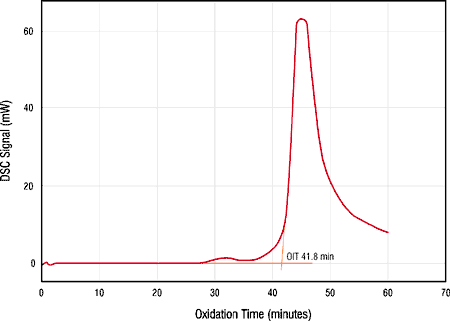
Figure 1. Pressure DSC Analysis of Engine Oil
When the OIT is short, below 10 minutes, the oxidation temperature should be decreased to 180°C (further to 155°C and 130°C).
Non-isothermal Analysis using ASTM E2009
As with isothermal analysis, about 3 milligrams of sample is prepared. The temperature is increased from ambient by a gradient of 10°C per minute and the oxygen pressure is maintained at 3.5 megapascals from the start of heating. The flow rate is adjusted to 50 milliliters per minute. A signal similar to the signal in Figure 1 is obtained and the oxidation onset temperature (OOT) is evaluated.
Results and Discussion
Engine Oils
Analyses were performed on more than 60 engine oils of different specifications and from different producers. The engine oils were analyzed by the isothermal procedure according to ASTM D6186. However, the temperature of PDSC analysis was decreased by 10°C, which almost doubled the OITs. (Experience has shown that a temperature of 200°C is more suitable for modern engine oils.) The OITs ranged from 17 minutes to 80 minutes, which made it fairly easy to differentiate between individual oils.
OITs express the potential of motor oil to fight against oxidation. During the induction period, oxidation reactions are influenced by antioxidants. Even after consumption of the antioxidants, the hydrocarbon chains can be oxidized by a radical mechanism and an exothermic effect can clearly be seen in the DSC output signal (Figure 1). The OIT can thus be considered as a factor that is somewhat proportional to the antioxidant capacity of engine oils and other lubricants.
In this experiment, PDSC analysis proved to be a powerful tool for comparing oxidation stability of engine oils. Figure 2 compares the oxidation stability, expressed as OITs, of the SAE 5W-30 oils that were subjected to the PDSC analysis.

Figure 2. Oxidation Stability of SAE 5W-30 Engine Oils by PDSC
There were large differences between OITs of individual engine oils. Oils with the European specification ACEA A3/B3 and B4 had good oxidation stability. However, oils with the specification ACEA A1/B1 and with high temperature, high shear (HTHS) viscosity of less than 3.5 megapascal seconds (cP) displayed rather poor oxidation stability (oils E and F in Figure 2).
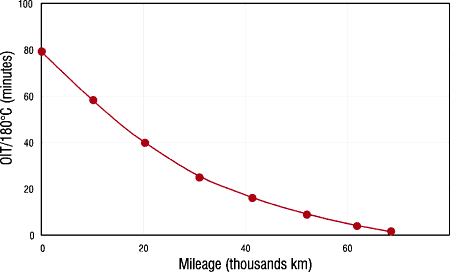
Figure. 3 Decrease of OIT During Engine Operation
PDSC can also be an effective diagnostic tool.4,5 Figure 3 shows a decrease of OIT during operation of oil in a heavy-duty Volvo FH 12 engine. The normal drain interval of that oil was 40,000 kilometers (24,855 miles), however, the oil was operated for up to 67,000 kilometers (41,632 miles). There is clearly an exponential decay of OITs, showing that much of the antioxidant capacity of engine oil was consumed during the first 20,000 kilometers (12,427 miles).
Base Oils
An isothermic technique is not the best choice for evaluating base oils’ oxidation stability. The OITs are very low, less than five minutes, even if the temperature is lowered to about 170°C. Moreover, lower temperatures lead to a broad DSC signal with a low intensity. The better choice for testing base oils is the non-isothermal procedure that leads to a signal similar to the signal in Figure 1. A disadvantage of the non-isothermal method is a possibility of larger experimental errors. Most of base oils’ OOTs are between 190°C and 230°C. This means that OOT of those base oils are detected within four minutes at the gradient of 10°C per minute. There is much less opportunity to distinguish between two base oils with close oxidation stability. Figure 4 compares the oxidation stability for several base oils, hydrocracked as well as solvent neutral, and for the same oils with 0.4 percent by weight of Butylhdroxytoluene (BHT), a common antioxidant found in turbine oils.
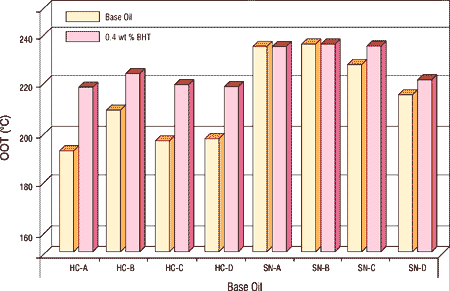
Figure 4. Oxidation Stability of Some
Hydrocracked (HC) and Solvent Neutral (SN) Oils
It is apparent from Figure 4 that solvent neutral oils, under the PDSC conditions, were much more oxidatively stable than hydrocracked oils. Even after the addition of the BHT antioxidant, oxidation stability of the hydrocracked-based oils was mostly lower than that of solvent neutral-based oils. These results do not correspond to a praxis experience that turbine oils based on hydrocracked oils are much more stable than those based on solvent neutral oils. This is most likely due to a high temperature character of oxidation, as the OOTs were detected around 200°C. Turbine oils typically operate at low temperatures where a quite different oxidation mechanism occurs with respect to an oil composition.6 Incorporation of a 60-minute isothermal step at 150°C (temperature of usual RPVOT test) before detecting the OOT still had no substantial effect on hydrocracked and solvent neutral oils’ oxidation. The RPVOT also uses moisture and copper as oxidation catalysts.
Conclusion
PDSC is a useful tool for evaluating oxidation stability of lubricating oils. Small samples and analysis duration of 60 minutes or less are the main advantages. It is especially suitable for evaluation of high-temperature oxidation. PDSC has a great potential for oil ageing diagnostics and for a rapid assessment of lubricating oils’ oxidation stability.

any engine oil
LUBRICATING OIL
FORMULATIONS
ENCYCLOPEDİA
is enough.
LUBRICATING OIL FORMULATION ENCYCLOPEDIA has many formulations of greases, complex grease, lithium grease production,sodium greases formula, formulation,multigrade engine oils manufacturing process,motor oils making, gear oil production, synthetic engine oils,semi synthetic motor oils,gasoline oils,diesel oils production process,composition of turbine oils,transmission oil manufacturing, production of cycle motor engine, tractor oils,mineral based motor engine production,heat transfer oils, slideway oils formulation, formulations, cutting oils formula,formulas grinding oils,mould oils manufacturing process and etc.
All lubricating oils in the encyclopedia are producible easily.You need no help and no technıcal support. The encyclopedia is enough to produce lubricating oils and engine oils itself.
LUBRICATING OIL
FORMULATIONS
ENCYCLOPEDIA
is written clear and understandable.


HARD BOOK E BOOK
RELATED TAGS: What is engine oils,making synthetic diesel engine oil,semi synthetic engine oil manufacturing process,mineral based engine oil production, heavy duty engine oil formulation,high performance engine oil formula,formulas,properties of motor oils,synthetic motor oil msds, analysis,composition of engine oils,additives of motor oils, mineral engine oil formulation,make semi synthetic diesel engine oil, base oils,synthetic base oils,light neutral oil,heavy neutral oil,performance additives package, properties of diesel engine oil, how to formulate engine oils, types of engine oils, synthetic motor oils,ingredients of engine oils,compounds of engine oils, index of motor oil,characteristic of motor oils,application of motor oils,combination of synthetic engine oils.
SOLVERCHEM PUBLICATIONS

|
|
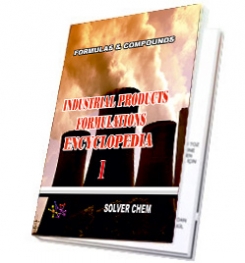
|
|
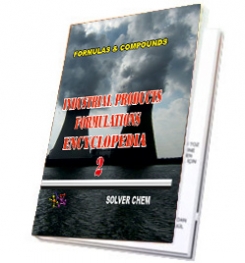
|
|
